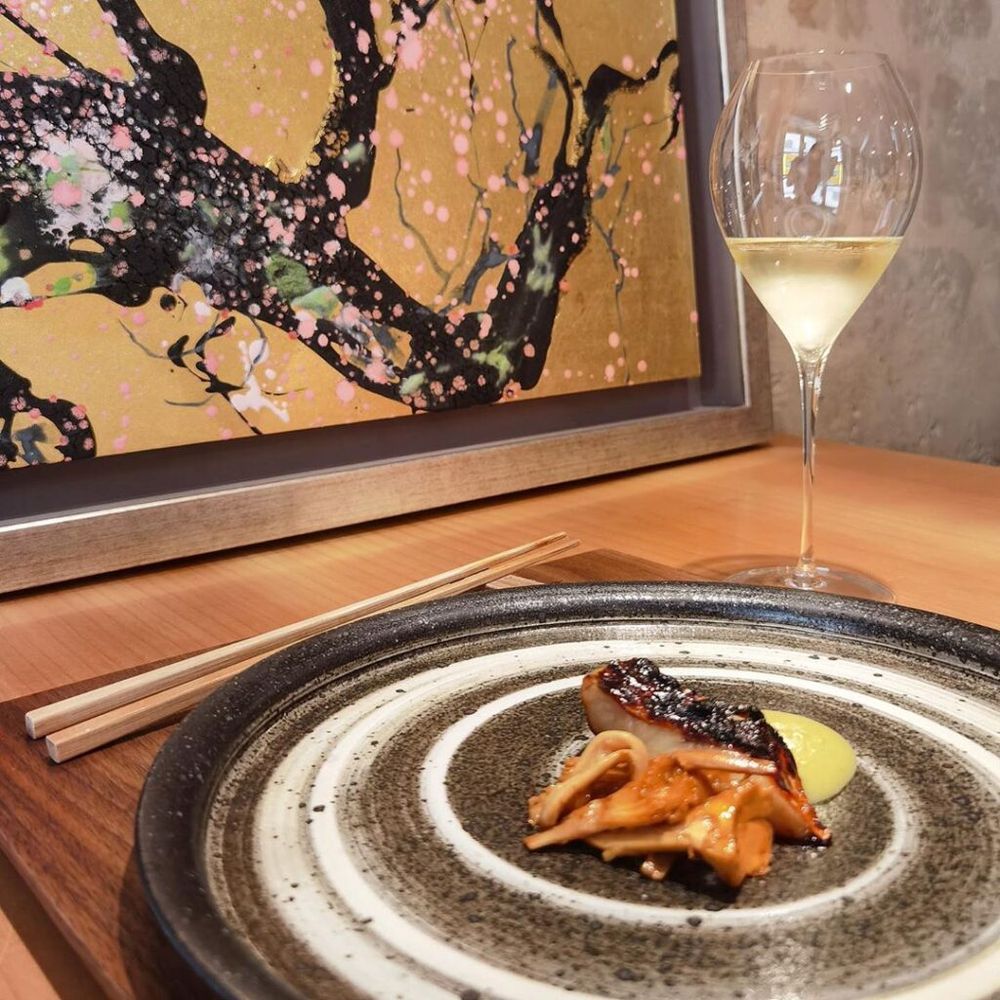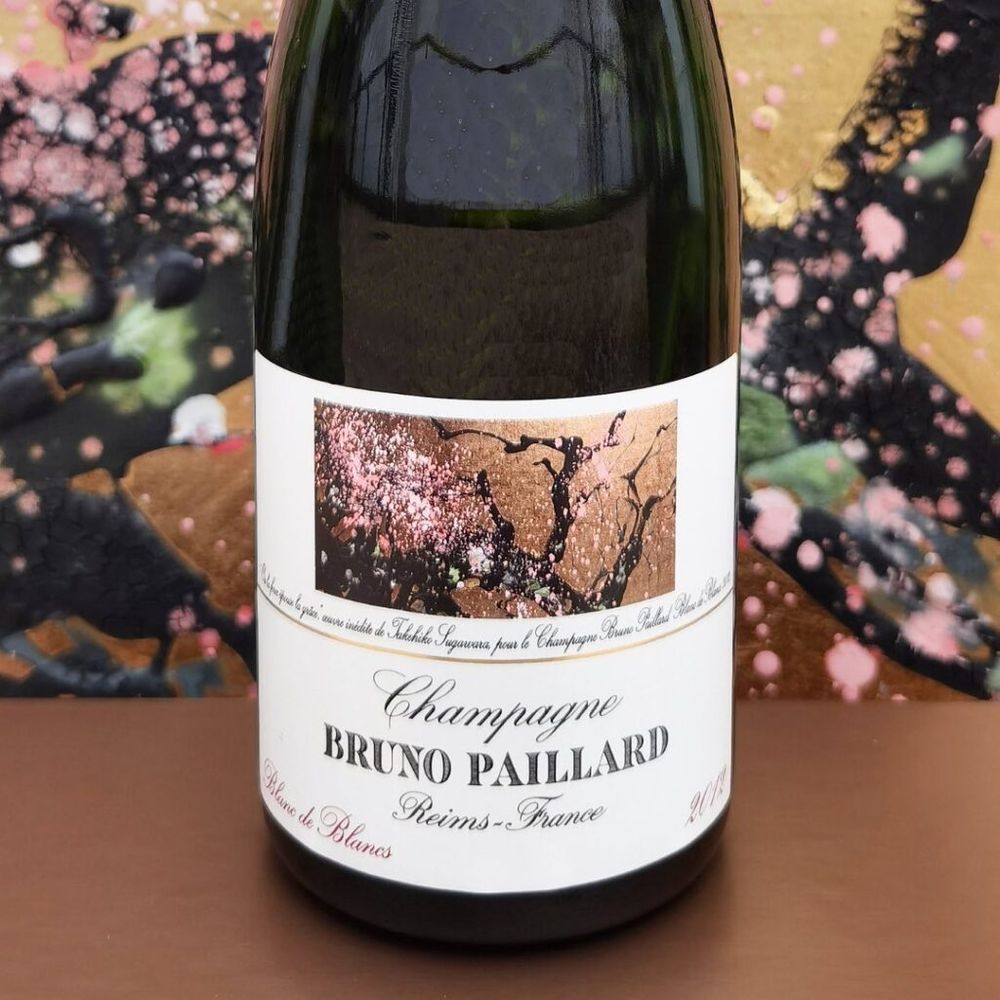Japanese artist Takehiko Sugawara was commissioned to create a work of art that depicts the wine’s theme – “where strength marries grace”.
This strange and pestilent year has seen a number of stellar Champagne releases. Today, on a rainy October day, a real class act has been added to this gallery, presented by Alice Paillard of Champagne Bruno Paillard.

While we have seen a veritable flurry of 2012 vintage releases, Paillard stood out by presenting a Bruno Paillard Blanc de Blancs 2012 from that challenging year. The wine, she said, “was almost a survivor: of the below 20°C spring frosts and hail. It combines a small harvest quantity-wise with an intense and powerful wine” which she described as “compact”. Paillard reminded us that at this house there “were a few rules written in stone” which are, amongst others, to use the first pressing only and long post-disgorgement ageing. She also noted that only Grand Cru wines were used, two thirds of Mesnil and one third of Oger in the Côte des Blancs.
2012, of course, is noted for its warm summer that saved this turbulent growing season, for which Paillard’s own attribute was “tumultuous”. She said that while 2012 was often compared to 2002, “we had a higher maturity than in 2002 but also higher acidity. This may sound counterintuitive but that is the intriguing part of 2012. The wines that entered this cuvée even had a lower pH in 2012 and it is these elements combined that make this wine intriguing.”
Paillard noted that the base wines had gone through full malolactic fermentation, which explained that creamy texture, alongside a fifth of the base wines having been aged in small oak barrels. Malolactic fermentation, so Paillard said, was a subject “that we are not dogmatic about. It is an interesting way to explore the quest for a certain type of acidity. We think that more than acidity we are interested in liveliness. But that’s a relatively new way of thinking in Champagne. It’s a new path. Maybe we will evolve in the future with less malolactic but I don’t think we’ll see the day when we won’t do MLF at all.”
The wine was disgorged in April 2019 with a dosage of just 3g/l and around 15,000 bottles were made. Japanese artist Takehiko Sugawara was commissioned to create a work of art that depicts the wine’s theme. His rendition of “where strength marries grace” now graces the label with sometimes stark, sometimes ethereal gold, pink and black. He took his inspiration from cherry trees in Japan. To depict their true nature, he paints not the trees themselves but their trunks.
Like the other 2012 Champagnes released, the Bruno Paillard Blanc de Blancs 2012 is very approachable. However, I would lay this down. Paillard agrees. She hopes that the wine’s “potential of strength and power and its finesse will go on together. For sure we make wines that can handle time; you can observe the evolution yourself. But I am very happy to have another chat in ten years’ time about the same bottle,” she said.

Champagne Bruno Paillard, Blanc de Blancs, 2012, 12%
Gorgeously creamy nose at first, reminiscent of raw, all-butter shortcrust pasty with fresh lemon zest. With more air a distinct notion of chalk comes through, as well as a notion almost of chamomile, a hint of the lift of pine. There is the inherent austerity of pure chalk soil which anchors this in profound coolness, relieved by the ripeness of 2012. There is a steeliness at the core that shimmers through, an essential, true nature that makes the statuesque structure of this wine, clothed in a warmer notion of ripeness. It treads a tenuous path between that utter, austere freshness of purest chalk and generous, warmth and ripeness. Its core of pure lemony brightness constitutes inherent, soothing coolness. The finish stands out via its taut, creamy apple-flesh texture. Just as we expect from this house, this is a picture of elegance. It is lovely now, but I am certain that this will wow us over years to come.
Bruno Paillard is distributed by Bibendum, the RRP of this wine is £80
































